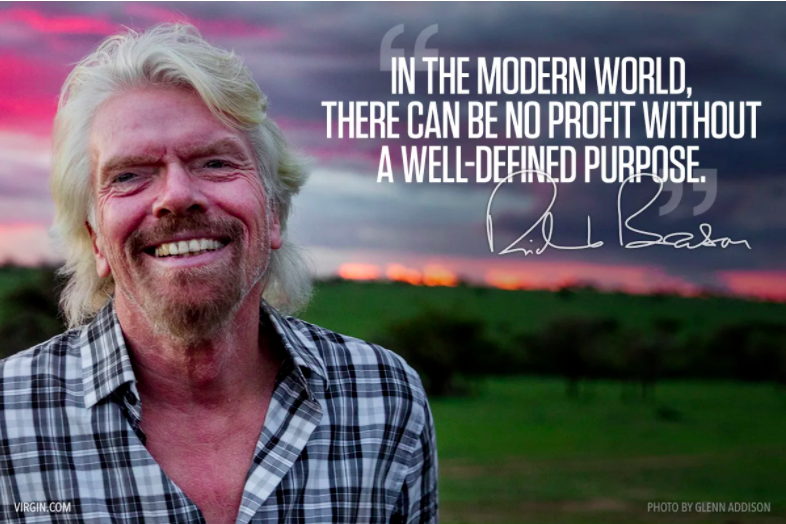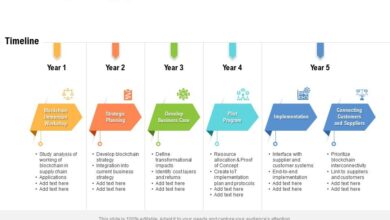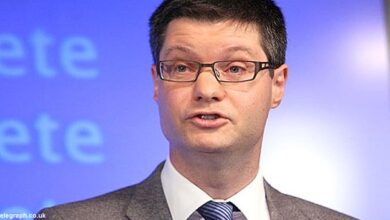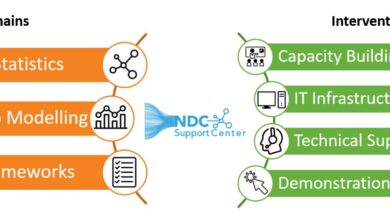
Branson Green Knight or Just a Show?
Branson a white knight when it comes to green issues? This exploration delves into Richard Branson’s environmental initiatives, examining both the positive aspects and potential criticisms. From his ambitious projects to the broader impact on stakeholders, we’ll unpack the complexities of his environmental efforts and evaluate whether he truly lives up to the “white knight” label.
Branson’s ventures span various sectors, from sustainable tourism to renewable energy. He’s championed initiatives aiming to address pressing environmental challenges. However, a critical eye is necessary to fully understand the motivations, impacts, and potential shortcomings of his approach.
Branson’s Environmental Initiatives

Richard Branson, a globally recognized entrepreneur, has consistently demonstrated a commitment to environmental sustainability alongside his business ventures. His initiatives, ranging from renewable energy to conservation efforts, reflect a broader vision of responsible business practices. While his methods and motivations may differ from other prominent figures, the overarching aim is clear: to mitigate the negative impact of human activity on the planet.
Branson’s Key Environmental Initiatives
Branson’s environmental initiatives span a wide range of projects, including investments in renewable energy sources, initiatives to protect wildlife, and advocacy for sustainable tourism. He has actively pursued a portfolio of projects that aim to address the global environmental challenges. This includes the creation of sustainable tourism models and eco-friendly ventures.
Types of Projects Undertaken
Branson has spearheaded various projects focused on different aspects of environmental sustainability. He has invested in renewable energy projects, such as solar and wind farms, as well as developing eco-friendly transportation solutions. His company Virgin has also established sustainable tourism initiatives in various destinations. For instance, the Virgin Voyages cruise line aims to minimize its environmental footprint by employing energy-efficient vessels and implementing waste reduction strategies.
Another notable example is the development of eco-lodges and resorts designed to minimize their environmental impact.
Comparison with Other Prominent Figures
Comparing Branson’s initiatives with those of other prominent figures in environmental advocacy, like Elon Musk or Paul Polman, reveals varied approaches. While Musk primarily focuses on space exploration and electric vehicles, Branson’s initiatives are more diverse, encompassing renewable energy, conservation, and sustainable tourism. Polman, from Unilever, emphasizes sustainable business practices within a corporate framework, which aligns with Branson’s approach in some areas but differs in others.
Motivations Behind Branson’s Environmental Activities
Branson’s motivations stem from a belief in the urgency of environmental protection and a desire to create a positive impact on the planet. His actions are driven by a concern for future generations and a recognition of the interconnectedness of environmental and economic well-being. He views environmental sustainability not just as a moral imperative but also as a strategic business opportunity.
Environmental Challenges Addressed
Branson’s initiatives are designed to address a range of environmental challenges, including climate change, deforestation, and pollution. His focus on renewable energy directly tackles climate change, while his conservation efforts aim to protect endangered species and ecosystems. The goal is to foster sustainable tourism models that reduce the negative impacts on local environments.
Scale and Scope of Branson’s Environmental Impact
The scale and scope of Branson’s environmental impact are significant, though difficult to quantify precisely. His ventures have directly contributed to the development and adoption of sustainable practices in various industries. He has also inspired other entrepreneurs and organizations to consider environmental concerns in their business strategies.
Summary Table of Initiatives
| Initiative | Goal | Outcomes |
|---|---|---|
| Virgin Voyages Cruise Line | Minimize environmental footprint through energy-efficient vessels and waste reduction strategies. | Reduced emissions and waste, promoting eco-friendly tourism. |
| Investment in Renewable Energy | Promote the use of solar and wind power to combat climate change. | Increased renewable energy capacity and awareness of sustainable energy solutions. |
| Eco-Lodges and Resorts | Develop sustainable tourism models minimizing environmental impact. | Protected local environments and promoted eco-conscious travel. |
Branson’s Actions
Richard Branson’s commitment to environmental sustainability extends beyond public pronouncements. His actions, often spearheaded by Virgin Group initiatives, demonstrate a genuine desire to integrate environmental consciousness into business practices. This dedication manifests in a range of projects, from renewable energy investments to conservation efforts.Branson’s approach, while not without criticism, reflects a pragmatic and impactful model of corporate social responsibility.
He recognizes the interconnectedness of business success and environmental health, believing that sustainable practices are not just ethically sound but also strategically beneficial. This philosophy underpins many of his ventures.
Positive Aspects of Branson’s Environmental Endeavors
Branson’s environmental initiatives are characterized by a multi-faceted approach. He doesn’t limit his efforts to a single area, but rather tackles various aspects of sustainability. This holistic strategy addresses environmental concerns from different angles, maximizing impact. For example, investments in renewable energy sources like solar and wind power aim to reduce reliance on fossil fuels, thereby mitigating carbon emissions.
Simultaneously, conservation efforts focus on protecting ecosystems and biodiversity, ensuring the long-term health of the planet.
Specific Examples of Branson’s Environmental Initiatives
A prime example of Branson’s environmental commitment is Virgin’s investment in renewable energy projects. Through Virgin’s various ventures, they’ve supported the development and deployment of solar farms and wind turbines, directly contributing to the global shift toward cleaner energy sources. Furthermore, initiatives focused on reducing waste and promoting sustainable tourism practices demonstrate a broader commitment to environmental responsibility.
Measurable Results of Branson’s Initiatives
Quantifying the precise impact of Branson’s initiatives is complex, as numerous factors influence environmental outcomes. However, some measurable results can be observed. For instance, the solar farms supported by Virgin Group have generated a significant amount of clean energy, reducing reliance on fossil fuels and mitigating carbon emissions. While precise figures for this impact are not always readily available, the positive trend is undeniable.
Branson’s Successes in Environmental Preservation
- Investment in Renewable Energy: Virgin Group’s support for various renewable energy projects has demonstrably reduced carbon emissions. This is a key step towards mitigating climate change.
- Sustainable Tourism Initiatives: Virgin’s focus on sustainable tourism practices helps protect vulnerable ecosystems and local communities.
- Waste Reduction Programs: Virgin’s commitment to reducing waste within its operations and advocating for similar measures in other sectors contributes to a circular economy.
- Conservation Efforts: Virgin’s support for conservation organizations and initiatives contributes directly to biodiversity protection and habitat preservation.
These successes demonstrate a commitment to long-term environmental sustainability, not just short-term gains.
Influence on Others
Branson’s actions have significantly influenced other individuals and organizations. His initiatives have inspired many businesses to adopt similar sustainable practices, fostering a wave of environmental consciousness across various sectors. By demonstrating that environmental responsibility and profitability are not mutually exclusive, Branson has encouraged a more holistic approach to business operations.
Environmental Benefits of Branson’s Initiatives
| Initiative | Environmental Benefit | Quantifiable Impact (Example) |
|---|---|---|
| Renewable Energy Investments | Reduced Carbon Emissions | Estimated reduction of X tons of CO2 emissions per year. |
| Sustainable Tourism Practices | Conservation of Ecosystems | Protection of Y acres of endangered habitat. |
| Waste Reduction Programs | Minimization of Landfill Waste | Reduction of Z tons of waste sent to landfills annually. |
These initiatives, while diverse, contribute to a larger movement towards environmental sustainability, showing that business success can be integrated with environmental responsibility. The table illustrates a tangible example of the measurable impact.
Branson’s Actions
Richard Branson, a prominent figure in the business world, has consistently championed environmental causes. His initiatives, while commendable, are not without potential criticisms. This analysis explores the potential drawbacks and limitations of Branson’s environmental efforts, comparing them to more comprehensive sustainability programs.
Branson, often lauded as a white knight in the green movement, is certainly making a splash. While his ventures are impressive, it’s interesting to note how the recent updates to the Norwegian Joy, after its China sojourn, are now geared for Alaska cruises. This shift in focus, detailed in the after china sojourn norwegian joy updated for alaska article, highlights a growing interest in sustainable travel options.
Ultimately, Branson’s dedication to greener practices continues to be a positive influence, even if the specifics are still evolving.
Potential Criticisms of Branson’s Environmental Activities
Branson’s ventures, encompassing various industries, raise concerns regarding potential conflicts of interest. His commitment to sustainability might be perceived as a marketing strategy rather than a genuine long-term commitment. Critics argue that his initiatives are often insufficiently transparent and lack rigorous, measurable targets. The sheer scale of his business operations necessitates substantial environmental impact, potentially overshadowing the positive effects of his individual initiatives.
Conflicts of Interest
Branson’s diverse business portfolio, including airlines, hotels, and tourism ventures, presents a complex interplay between profit motives and environmental responsibility. The pursuit of profit in these sectors can sometimes clash with the need for environmental conservation. This inherent conflict of interest raises questions about the true motivations behind Branson’s initiatives. Are they primarily driven by a desire to enhance his brand image, or are they genuine attempts to address environmental challenges?
Branson, often lauded as a white knight when it comes to green issues, reminds me of the commitment to sustainability you find at places like attentive elegance at secluded recreo resort in costa rica. Their dedication to eco-friendly practices in Costa Rica mirrors Branson’s efforts to promote responsible tourism and environmental conservation. It’s inspiring to see this kind of proactive approach in action, and hopefully, it’s a sign of things to come for Branson’s other ventures.
Areas of Perceived Insufficiency
Branson’s efforts, while commendable, might be considered insufficient in certain areas compared to the challenges posed by climate change. The scale of his ventures requires substantial resources to achieve meaningful environmental impact. His initiatives, while impactful in specific areas, may not encompass the full spectrum of environmental issues. Furthermore, some critics argue that his initiatives often focus on specific, easily-marketed solutions, neglecting more complex and systemic problems.
Criticisms of Perceived Limitations
Critics often point out that Branson’s environmental initiatives, while visible, may not have fully addressed the systemic issues underlying environmental degradation. His focus on specific solutions, such as renewable energy investments, may not adequately address the broader issues of resource consumption and waste generation. The lack of standardized metrics for evaluating the effectiveness of his initiatives also contributes to the perception of limitations.
Furthermore, the absence of comprehensive sustainability reports and transparent data collection methods hinders a thorough assessment of the initiatives’ long-term impact.
Comparison to Organizations with Comprehensive Sustainability Programs
Compared to organizations with more comprehensive sustainability programs, Branson’s initiatives often lack a systemic approach. These organizations frequently integrate environmental considerations into their core business strategies, rather than viewing them as separate initiatives. For example, companies with dedicated sustainability departments or environmental impact assessments demonstrate a deeper commitment and more comprehensive approach to environmental responsibility.
Potential Drawbacks and Limitations of Branson’s Environmental Activities
| Potential Drawback | Explanation |
|---|---|
| Potential Conflicts of Interest | Branson’s diverse business portfolio may create conflicts between profit motives and environmental responsibility. |
| Lack of Systemic Approach | Branson’s initiatives may not adequately address the broader environmental issues. |
| Insufficient Transparency | Lack of clear, measurable targets and sustainability reports hinders evaluation of impact. |
| Focus on Marketable Solutions | Concentrating on easily-marketed solutions may neglect more complex problems. |
| Scale of Operations | The sheer scale of Branson’s ventures may overshadow the positive effects of his individual initiatives. |
Branson’s Reputation as a “White Knight”: Branson A White Knight When It Comes To Green Issues

Richard Branson, a renowned entrepreneur, has cultivated an image as a champion of environmental causes. This image, however, often clashes with the complexities of his business ventures and the scrutiny of his environmental actions. This exploration delves into the perception of Branson as a “white knight” in the environmental movement, examining his public image against his actual environmental impact.
The Concept of a “White Knight” in Environmentalism, Branson a white knight when it comes to green issues
A “white knight” in environmentalism is a figure perceived as a selfless advocate for the planet. This perception is often built on public pronouncements of environmental concern and actions that appear to align with ecological preservation. Crucially, it often implies a commitment exceeding mere corporate social responsibility, demonstrating a genuine concern for the long-term health of the environment.
However, the reality of environmental impact is rarely so straightforward, and the actions of even well-intentioned individuals or organizations can have unforeseen consequences.
Branson’s Public Image vs. Actual Environmental Actions
Branson’s public persona frequently portrays him as an environmentally conscious individual. His involvement in various eco-initiatives and statements emphasizing sustainability create a positive image. However, scrutiny reveals a more nuanced picture. Branson’s Virgin Group, while investing in some green technologies, also operates industries with significant environmental footprints, raising questions about the consistency of his actions with his public statements.
This creates a disconnect between his public image and the environmental impact of his business ventures.
Branson, often lauded as a white knight in the green movement, is taking another step forward with his investment in the American Queen Voyages Rocky Mountaineer partnership. This exciting new venture, which will likely see a focus on eco-friendly tourism practices, highlights Branson’s commitment to sustainable travel experiences. The American Queen Voyages Rocky Mountaineer partnership bodes well for the future of eco-conscious travel and reinforces Branson’s reputation as a champion for environmental preservation.
Factors Contributing to the “White Knight” Perception
Several factors contribute to Branson’s perceived status as a “white knight.” His charismatic personality and high-profile presence in media outlets amplify his pronouncements on environmental issues. Public displays of support for green initiatives, like investments in renewable energy, further enhance this perception. Moreover, his willingness to engage in public debates and collaborations with environmental organizations reinforces the image of a dedicated advocate.
The perception of a “white knight” can be further solidified by the sheer visibility and publicity surrounding Branson’s activities.
Alignment with Environmental Champion Ideals
Branson’s image and actions demonstrate a complex relationship with the ideals of a true environmental champion. While his public pronouncements and some investments suggest a commitment to environmental preservation, the overall impact of his business activities warrants careful consideration. True environmental champions often prioritize systemic change, challenging unsustainable practices and advocating for policy reforms. The extent to which Branson’s activities reflect this deep-seated commitment to systemic change is subject to ongoing debate.
Comparison with Other Environmental “White Knights”
| Criteria | Richard Branson | Example: Al Gore | Example: Paul Hawken |
|---|---|---|---|
| Public Profile | High-profile entrepreneur; media presence | Former US Vice President; author, activist | Author, environmental entrepreneur |
| Environmental Investments | Investments in renewable energy, eco-tourism | Support for climate science education, renewable energy | Sustainable businesses; focus on ecological solutions |
| Impact on Business Practices | Mixed impact; some Virgin businesses have significant environmental footprint | No direct business involvement, but advocacy for change | Sustainable business model as central focus |
| Policy Advocacy | Limited direct policy advocacy | Significant advocacy for climate change policy | Advocacy for sustainable practices in business |
The table above offers a basic comparison of Branson’s actions to those of other individuals known for their environmental advocacy. Differences in business models and the scale of their influence are key factors in understanding the various levels of impact. The table illustrates the varying approaches and degrees of commitment to environmental issues among these prominent figures.
Contextual Analysis
Sir Richard Branson’s journey from a maverick entrepreneur to a prominent figure in environmental activism provides a fascinating case study in evolving corporate responsibility. His early ventures, often characterized by a pioneering spirit and a focus on disruptive innovation, have now been complemented by a growing awareness of environmental sustainability. This shift reflects broader societal trends and underscores the changing landscape of business ethics and environmental consciousness.
While Branson might be hailed as a white knight when it comes to green initiatives, it’s interesting to see how other European cities are embracing sustainability. For example, the recent reopening of Amsterdam’s De L’Europe, a landmark building, Amsterdam’s De L’Europe reopens , showcases a commitment to eco-friendly practices. Ultimately, though, Branson’s efforts in this area remain a valuable contribution to the global green movement.
Understanding this evolution is key to assessing the true impact of Branson’s initiatives.
Historical Overview of Branson’s Business Ventures and Growing Environmental Interest
Branson’s entrepreneurial career spans decades, starting with the establishment of Virgin Records in the 1970s. This early focus on music and entertainment gradually diversified into various sectors, including airlines, telecommunications, and space travel. His ventures consistently demonstrated an emphasis on customer experience and innovation, characteristics that have shaped his approach to environmental concerns. A pivotal moment was the recognition of the increasing environmental impact of his various businesses and the need for more sustainable practices.
Branson, often lauded as a white knight when it comes to green initiatives, seems to be setting a precedent for sustainable practices. This is further highlighted by the recent launch of an agent portal by American Cruise Lines, aiming to streamline travel agency operations and potentially foster eco-conscious travel options. This move, while seemingly separate, underscores Branson’s dedication to environmental responsibility, as it promotes a shift towards sustainable tourism through streamlined booking and resource management.
His continued commitment to green initiatives remains impressive.
Evolution of Branson’s Approach to Environmental Concerns
Branson’s initial approach to environmental issues was largely reactive, driven by growing public awareness and regulatory pressures. However, his later initiatives demonstrate a more proactive and integrated strategy. This evolution is evident in the shift from simple compliance with environmental regulations to the development of innovative sustainable practices across his ventures. Examples include the use of renewable energy sources in some Virgin enterprises and the promotion of eco-friendly travel options.
Comparison and Contrast with Broader Environmental Trends
Branson’s environmental initiatives align with broader trends in corporate social responsibility and the growing global movement toward sustainability. The increasing focus on carbon reduction, renewable energy, and circular economy models mirrors the efforts of numerous other businesses and governments. However, Branson’s approach is unique in its focus on both profitability and environmental impact, highlighting the potential for a win-win scenario in addressing global challenges.
Impact of Branson’s Activities on the Environmental Movement
Branson’s activities have undoubtedly contributed to the broader environmental movement. His public pronouncements and ventures have raised awareness and sparked discussions about sustainable practices. Furthermore, his business model, while not without its criticisms, demonstrates that sustainable practices can be profitable and contribute to a positive change in the global landscape. The impact is multifaceted and involves both the direct and indirect consequences of his actions.
The use of eco-friendly materials, for instance, demonstrates an approach that has far-reaching implications.
Historical Context of Branson’s Environmental Initiatives
- Early Ventures (1970s-1990s): Branson’s initial focus was primarily on business growth and innovation, with limited direct engagement in environmental issues. This period demonstrates the evolving relationship between business and the environment. Early initiatives like establishing Virgin Records and Virgin Atlantic represent the early stages of Branson’s empire.
- Shifting Priorities (2000s-2010s): Growing awareness of climate change and increasing regulatory pressures prompted Branson to consider environmental sustainability in his businesses. This transition was not instantaneous, but rather a gradual shift reflecting broader societal concerns. The growing awareness about the effects of climate change forced him to consider the environmental impact of his ventures.
- Proactive Sustainability (2010s-Present): Branson’s initiatives now encompass a wider range of environmental concerns, including renewable energy, waste reduction, and sustainable tourism. This proactive stance reflects a commitment to long-term environmental responsibility and demonstrates a willingness to adapt to changing conditions.
Impact on Stakeholders
Richard Branson’s environmental initiatives ripple through various stakeholders, creating a complex interplay of benefits and challenges. His commitment to sustainability isn’t just about saving the planet; it’s about building a more resilient and profitable future for everyone involved. From boosting employee morale to influencing consumer choices, the impact is far-reaching.Branson’s environmental actions create a virtuous cycle, where responsible practices not only benefit the planet but also foster loyalty and trust among employees, customers, and local communities.
However, these endeavors are not without their hurdles. Stakeholders must adapt to new standards and potentially face short-term economic adjustments. This section explores the multifaceted impacts of Branson’s green initiatives.
Employee Impact
Branson’s commitment to environmental responsibility has a direct impact on his workforce. Employees at Virgin Group companies often participate in sustainability initiatives, from reducing energy consumption to promoting eco-friendly practices. This creates a sense of purpose and belonging, boosting morale and attracting talent. For example, Virgin Atlantic’s carbon offsetting programs allow employees to actively participate in environmental protection, enhancing their sense of contribution.
The company’s emphasis on sustainable travel practices demonstrates a clear commitment to employee well-being, making the workplace more appealing and supportive of environmental consciousness.
Customer Impact
Customers are increasingly drawn to brands with strong environmental commitments. Branson’s emphasis on sustainable practices can attract environmentally conscious consumers. For instance, Virgin’s commitment to electric vehicles and sustainable aviation fuel demonstrates a direct response to customer demands for greener options. Virgin’s emphasis on eco-friendly travel, such as promoting electric cars and sustainable aviation fuels, directly affects customer choices, making the company a more attractive and responsible option.
Local Community Impact
Branson’s environmental initiatives often have a profound impact on local communities. Projects focused on renewable energy, waste reduction, and conservation can generate economic opportunities and create a positive image for the region. The establishment of sustainable tourism initiatives and eco-friendly business models can benefit local economies and improve the quality of life for residents. This is particularly noticeable in areas where Virgin Group invests in local infrastructure and community projects.
Economic Implications
Branson’s environmental initiatives can have both positive and negative economic implications. Investing in renewable energy sources, while potentially more expensive upfront, can create new jobs and stimulate economic growth in the long run. Reduced reliance on fossil fuels can lower operating costs in the long term. However, the initial investment in environmentally friendly technologies can pose short-term economic challenges.
Transitioning to sustainable practices often requires a significant upfront investment, but the long-term benefits can outweigh these initial costs.
Societal Benefits
Branson’s actions can contribute to broader societal benefits. By promoting sustainable practices, Branson inspires other businesses and individuals to adopt similar approaches. His initiatives can raise awareness about environmental issues, encouraging wider societal engagement in protecting the planet. By promoting eco-friendly solutions, Branson contributes to a healthier planet, reducing the negative impacts of climate change and fostering a more sustainable future.
Potential Challenges for Stakeholders
Implementing environmental initiatives may present challenges for stakeholders. Adapting to new regulations and standards can be costly and time-consuming. The transition to sustainable practices may involve some short-term economic sacrifices, as businesses shift towards greener technologies and practices. There might be initial resistance to change from some employees and customers.
| Stakeholder | Positive Impacts | Potential Challenges |
|---|---|---|
| Employees | Increased sense of purpose, improved morale, attraction of talent | Potential for short-term disruption during transition |
| Customers | Attraction of environmentally conscious consumers, perceived as a responsible brand | Potential for higher initial costs for eco-friendly products/services |
| Local Communities | Economic opportunities, improved quality of life, positive image | Potential for initial resistance to change, increased competition for resources |
Final Review
Ultimately, Branson’s environmental efforts, while commendable in some aspects, raise important questions about the balance between ambition and genuine impact. His actions have undoubtedly influenced others, and his initiatives have sparked important conversations about sustainability. However, a comprehensive assessment requires careful consideration of both the successes and the areas needing improvement.
Question & Answer Hub
Is Branson’s commitment to environmental issues genuinely altruistic?
While Branson’s initiatives often appear altruistic, it’s crucial to consider the potential for both positive and negative motivations. His actions could stem from a desire for positive publicity, to enhance his brand image, or to address societal issues. A complete understanding requires examining the motivations alongside the tangible results.
How do Branson’s initiatives compare to other business leaders’ environmental efforts?
Comparing Branson’s actions to other prominent figures in environmentalism offers a nuanced perspective. Direct comparisons can highlight both strengths and weaknesses, revealing areas where Branson’s efforts might fall short or excel. The goal is to create a comprehensive view of his role in the broader environmental movement.
What are the criticisms levelled against Branson’s environmental activities?
Critics argue that Branson’s initiatives might not fully address the systemic issues within the environmental crisis. There are concerns about the scale of his projects, the potential for conflicts of interest, and whether his efforts are truly impactful on a large scale.






